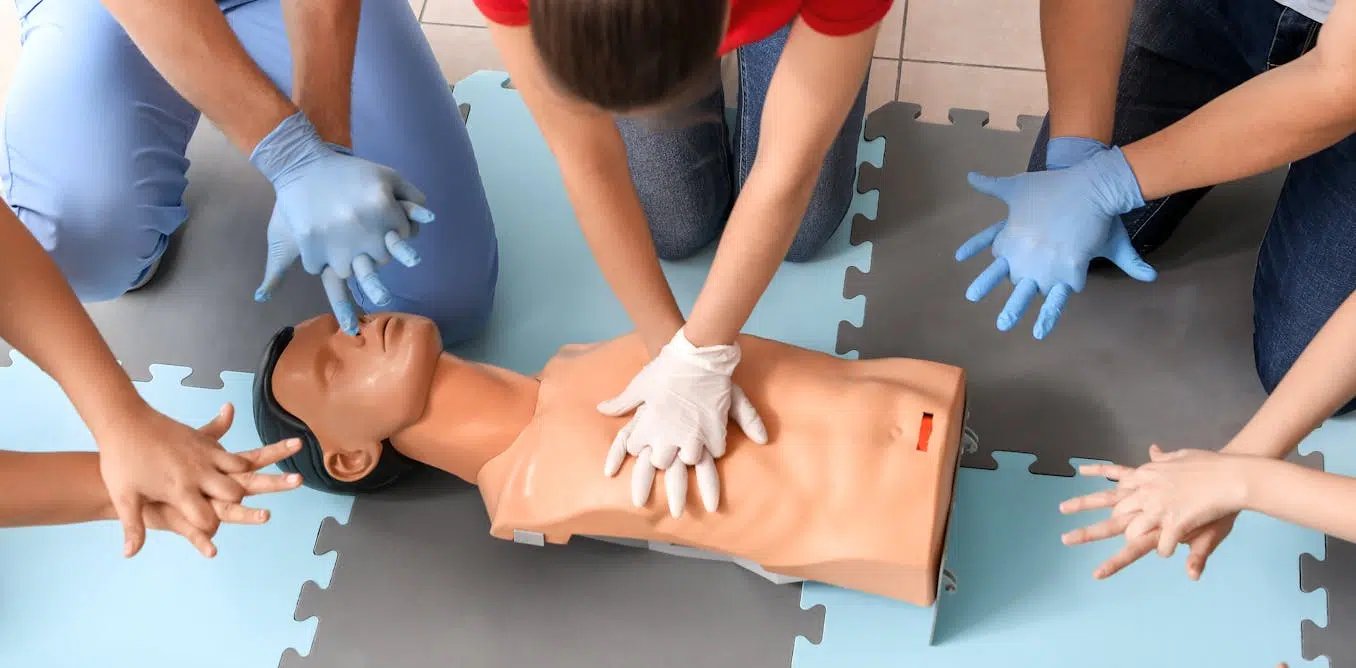Women are less likely to receive CPR than men


Heart Health Disparities
If someone’s heart suddenly stops beating, they may only have minutes to live. Doing CPR (cardiopulmonary resuscitation) can increase their chances of survival. CPR makes sure blood keeps pumping, providing oxygen to the brain and vital organs until specialist treatment arrives.
Bystander Reluctance
Research shows bystanders are less likely to intervene to perform CPR when the person is a woman. A recent Australian study analyzed 4,491 cardiac arrests between 2017-19 and found bystanders were more likely to give CPR to men (74%) than women (65%).
Skewed to Male Bodies
Most CPR training resources feature male bodies, or don’t specify a sex. If the bodies don’t have breasts, it implies a male default. For example, a 2022 study looking at CPR training across North, Central, and South America found most manikins available were white (88%), male (94%), and lean (99%).
A Single Manikin with Breasts
Our new research investigated what CPR manikins are available and how diverse they are. We identified 20 CPR manikins on the global market in 2023. Manikins are usually a torso with a head and no arms. Of the 20 available, five (25%) were sold as "female" – but only one of these had breasts. That means 95% of available CPR training manikins were flat-chested.
Breasts Don’t Change CPR Technique
CPR technique doesn’t change when someone has breasts. The barriers are cultural. And while you might feel uncomfortable, starting CPR as soon as possible could save a life.
How to Perform CPR
To perform effective CPR, you should:
- put the heel of your hand on the middle of their chest
- put your other hand on the top of the first hand, and interlock fingers (keep your arms straight)
- press down hard, to a depth of about 5cm before releasing
- push the chest at a rate of 100-120 beats per minute (you can sing a song in your head to help keep time!)
What About a Defibrillator?
You don’t need to remove someone’s bra to perform CPR. But you may need to if a defibrillator is required. A defibrillator is a device that applies an electric charge to restore the heartbeat. A bra with an underwire could cause a slight burn to the skin when the defibrillator’s pads apply the electric charge. But if you can’t remove the bra, don’t let it delay care.
What Should Change?
Our research highlights the need for a range of CPR training manikins with breasts, as well as different body sizes. Training resources need to better prepare people to intervene and perform CPR on people with breasts. We also need greater education about women’s risk of getting and dying from heart-related diseases.
Conclusion
CPR is a simple yet effective way to save a life. By understanding the barriers to bystander CPR, we can work to increase the chances of survival for those in cardiac arrest. It’s time to recognize the importance of diverse CPR training manikins and to address the cultural barriers that prevent people from performing CPR on women.
Frequently Asked Questions
- What are the signs someone might need CPR?
- Not breathing properly or at all
- Not responding to you
- What is CPR?
- CPR is a lifesaving technique that helps restore a person’s breathing and heartbeat
- How do I perform CPR?
- Follow the steps outlined above
- What is a defibrillator?
- A device that applies an electric charge to restore the heartbeat
- Why are CPR manikins important?
- CPR manikins are essential for training people to perform CPR on people with different body types and genders
Recent Posts
Cardio and Strength Training Boost Health as You Age, Balance Exercises Reduce Falls
Why Balance Training is Crucial for Older Adults We all recognize the benefits of regular…
Grip Was a Nonfactor
Hatton's Arnold Classic Training Lucas Hatton, a two-time America's Strongest Man, shared his preparation for…
HIV vs. AIDS: How They Differ and Why Early Treatment Matters
How HIV and AIDS Differ The main difference between HIV and AIDS is that HIV…
The pandemic badly affected young people’s mental health – but also showed what they need now to thrive
The Teenage Years: A Time of Turmoil and Crisis A New Perspective on Adolescence The…
Taylor Atwood’s Squat Training 4 Weeks out From Powerlifting Nationals
Taylor Atwood on Track for Big Performance Taylor Atwood is considered one of the best…
Are Nicotine Pouches the Best Way to Quit Smoking?
Nicotine Pouches: A New Way to Quit Smoking? Nicotine Replacement Therapy Nicotine replacement therapy (NRT)…


